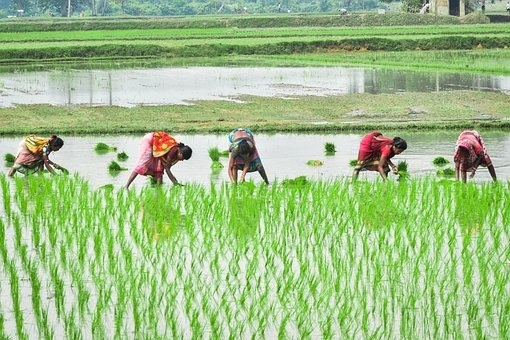‘Increase in farm work negatively affects nutrition of women engaged in agriculture’

■ Staff Reporter :
WOMEN in agriculture have to perform on two fronts — agricultural as well as domestic work. This results in less time with her to focus on nutrition. A recent study involving 960 households in 24 villages in Chandrapur district ofVidarbha, has found that the time tradeoffs or rising opportunity cost of time for women during peak agricultural seasons, are ‘negatively associated’ with intake of calories, proteins, iron, zinc, and Vitamin A. The study titled‘Seasonal time trade-offs and nutrition outcomes for women in agriculture: Evidence from rural India’ authored by Vidya Vemireddy of Indian Institute of Management, Ahmedabad; and Prabhu L Pingali associated with Charles H Dyson School of Applied Economics nad Management, Cornell University (US), has been published recently. For the study, total 960 households in 24 villages in Mul, Korpana, and Gondpipri blocks of Chandrapur district were surveyed.
The household survey modules covered agriculture, nutrition, empowerment, household information, reproductive health, income and expenditure index of men and women. The researchers also worked on detailed documentation of recipes eaten in local areas, and standardised 502 local recipes in terms of nutrient content and time spent on cooking. Major highlights of the study WOMEN in agriculture allocate significant time to agriculture and household activities, rising time demands during peak agricultural season may affect women’s nutrition, women’s time trade-offs ‘negatively affect consumption of various nutrients’.
These associations vary by cropping pattern and land ownership, the researchers found. Further, they have recommended that policies ‘must recognize’ women’s time constraints to improve their nutrition. As far as the negative impact of increased time spent on farm work in peak season on the nutritional intake of women is concerned, the study brings to fore some interesting observations. The study shows that “a 100- rupee increase in a woman’s agricultural wages (opportunity cost of time) per day is associated with a decline in her calories equal to 112.3 kcal, 0.7 mg iron, 0.4 mg zinc, and 1.5 g protein”. Women cook meals twice a day — morning and evening. The increased time in agriculture can reduce time for cooking during morning or evening hours. Lack of time and exhaustion also can affect preparation of meal by women. “They may choose to reduce cooking time, make dishes that are easy, less time-consuming, and require less effort.
This, in turn, can affect nutrients derived from these meals,” observe the authors of the study. On an average, a woman spends almost the same time as men in agriculture, but men spend limited time in food preparation, domestic work, and care activities, the survey found. In contrast, women spend more than 300 minutes daily on cooking and other domestic workrelated activities such as cleaning the house, washing utensils, clothes, etc. In peak seasons of sowing, transplanting, and harvesting, women’s extra hours in agriculture translate to reduced food preparation time. Time pressures in agriculture are also associated with less time for sleep, and rest-related activities, impacting overall health of women. According to the researchers, this negative relationship between time trade-offs and nutritional intake of women in farming ‘is manifested severely among women who are landless and cultivate paddy alone (food crop) or paddy and cotton (mixed crop)’.
Policy points of the study
■ Several strategies to reduce women’s time and work burdens by promoting labor-saving technologies for women are extremely important. It is vital to introduce labor-saving strategies both in agriculture as well as in domestic work. ■ Women’s wages are significantly lower, and there is enough evidence to suggest that improved incomes of women lead to the household’s better well-being. ■ The policy should be aligned to women’s needs in agriculture — be it technology, finance, and extension. ■ The programmes should make sure that benefits of participation in agriculture outweigh losses such as time for household activities and leisure. ■ Enhancing women’s nutrition would require considerable effort to ensure the consumption of diverse diets throughout the year. This requires a reorientation of Indian public policy in several ways. On supply side, this requires moving towards nutrition-sensitive food systems from largely staple-centric production systems. This can be further supported by making provisions of non-cereal foods through the public distribution system.
from WordPress https://ift.tt/3pi0fYJ
via IFTTT
Comments
Post a Comment